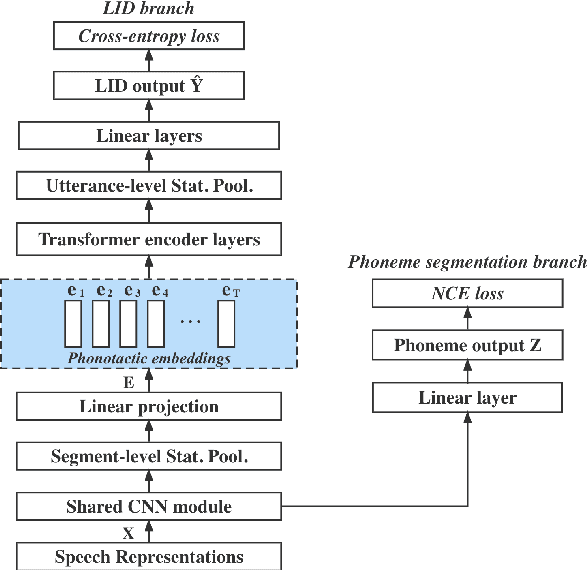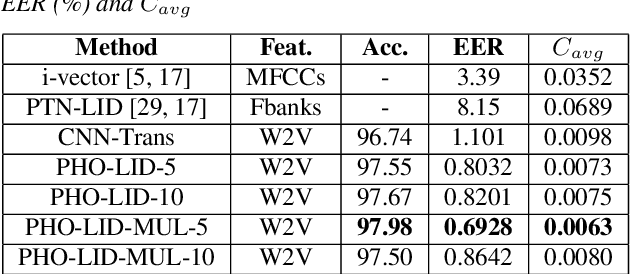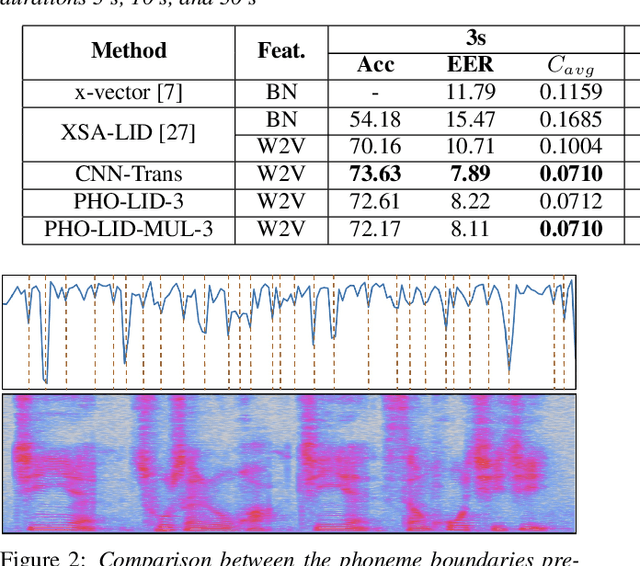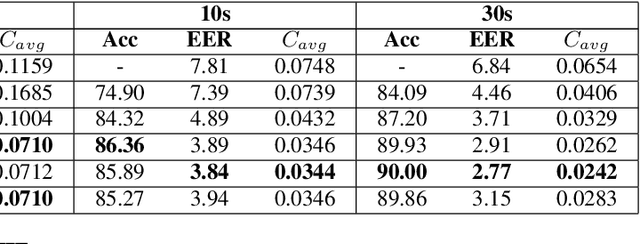PHO-LID: A Unified Model Incorporating Acoustic-Phonetic and Phonotactic Information for Language Identification
Paper and Code
Mar 31, 2022



We propose a novel model to hierarchically incorporate phoneme and phonotactic information for language identification (LID) without requiring phoneme annotations for training. In this model, named PHO-LID, a self-supervised phoneme segmentation task and a LID task share a convolutional neural network (CNN) module, which encodes both language identity and sequential phonemic information in the input speech to generate an intermediate sequence of phonotactic embeddings. These embeddings are then fed into transformer encoder layers for utterance-level LID. We call this architecture CNN-Trans. We evaluate it on AP17-OLR data and the MLS14 set of NIST LRE 2017, and show that the PHO-LID model with multi-task optimization exhibits the highest LID performance among all models, achieving over 40% relative improvement in terms of average cost on AP17-OLR data compared to a CNN-Trans model optimized only for LID. The visualized confusion matrices imply that our proposed method achieves higher performance on languages of the same cluster in NIST LRE 2017 data than the CNN-Trans model. A comparison between predicted phoneme boundaries and corresponding audio spectrograms illustrates the leveraging of phoneme information for LID.
 Add to Chrome
Add to Chrome Add to Firefox
Add to Firefox Add to Edge
Add to Edge